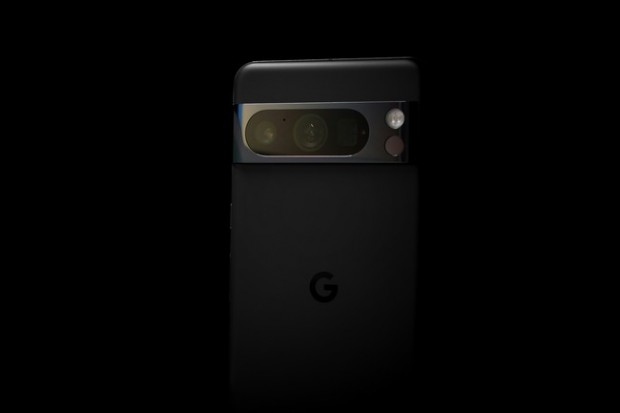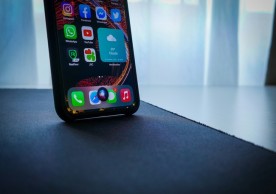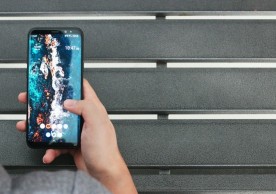Pixel 8 Pro's New Capability: Reads Body Temperatures with a Swipe Across Your Face and More
Pixel 8 Pro's New Capability: Reads Body Temperatures with a Swipe Across Your Face and More
Austin Jay
The Pixel 8 Pro by Google, equipped with an infrared temperature sensor, is receiving a new feature almost four months after its launch: body temperature measurement. The delay is attributed to the regulatory requirements for body temperature sensors, categorized as medical devices, necessitating FDA approval for activation.
After undergoing clinical trials, Google's software algorithm proved it could accurately measure body temperature with an error of ±0.3°C between 96.9°F and 104°F (36.1°C and 40°C), matching FDA-approved temporal artery thermometers.
Remembering that this feature is presently exclusive to American users is crucial. Body temperature monitoring is a valuable addition that improves the capabilities of the Pixel 8 Pro and adds a health-related feature.
Pixel 8 Pro's Infrared Temperature Sensor Raises Concerns Over Practicality and User Experience
Google's Pixel 8 Pro introduces a novel feature with its infrared temperature sensor, measuring body temperature. However, the practicality of this feature has faced criticism for its cumbersome execution. The sensor is located on the phone's back and requires FDA approval due to regulations categorizing body temperature sensors as medical devices.
To utilize the body temperature sensor, users must swipe the phone slowly across their face for four seconds, maintaining extreme proximity "as close as possible to the skin without touching."
Wearers of glasses must remove them, adding to the inconvenience. The sensor can also measure object temperatures within a limited two-inch range, lacking a camera feed or targeting system, providing only a single, non-continuous reading. Despite potential utility, the body temperature measurement feature is criticized for its impractical user experience, suggesting it may be better suited for a smartwatch than a smartphone.
The feature is part of the January 2024 Pixel update, introducing other features such as "Circle to Search" and AI-powered "Magic compose" for the Google Messages app. The rollout is expected "over the next few weeks."
The Pixel 8 Pro's infrared sensor's wide field of view (130+ degrees) requires close proximity-within half an inch of the skin-to avoid detecting heat beyond the forehead.
However, Google aimed for a "contactless" body thermometer to prevent germ spread. The solution involved utilizing the camera's laser detection autofocus (LDAF) sensor to determine the phone's distance from the forehead before initiating a measurement. This innovative approach ensures a safe and accurate temperature reading, addressing sensor sensitivity and health safety concerns.
The process includes a vibration as confirmation, enhancing the user experience and making the body temperature measurement feature more practical and user-friendly. Google's commitment to incorporating technology to meet health and safety standards is evident in this solution, ensuring the infrared sensor serves its purpose effectively while aligning with contactless and hygienic considerations.
Also Read: Google Introduces Video Boost For Pixel 8 Pro Users
Google's Latest Feature Drop Includes Quick Share Rebranding, Automatic Audio Switching, and Photomoji in Messages
In the latest feature drop, Google has rebranded Nearby Share to the simplified Quick Share, aligning with Samsung's branding. The functionality remains unchanged, allowing users to share content with nearby Android, ChromeOS, and Windows devices that support the feature.
Additionally, automatic audio switching is introduced for the upcoming Pixel Watch. Users can seamlessly switch Pixel Buds Pro audio between the Pixel Watch, Pixel phones, and Pixel Tablets, receiving helpful notifications about the audio destination.
With the addition of "Photomoji" to its Messages app, Google is finally giving communications a more imaginative and expressive touch. These changes demonstrate Google's dedication to improving user experiences throughout its ecosystem by offering streamlined connectivity, cutting-edge capabilities, and tailored interactions.
Google's continuous attempts to improve and broaden its product offerings are seen in the incorporation of automatic audio switching and the launch of Photomoji, which highlight the company's focus on customer ease and artistic expression.
Related Article: Pixel Devices Getting Android 14 January Security Patch, Update
most read
related stories
more stories from News
-
Walmart CEO Ephasizes Walmart App Usage in Stores Amidst Reevaluation of Self-Checkout Systems
Walmart CEO emphasizes Walmart app usage in stores amidst a reevaluation of self-checkout systems. Learn more by reading the article!
ernest hamilton -
One UI 6.1.1 Reportedly Introducing Video AI Features to Samsung Devices
One UI 6.1.1 reportedly introduces exciting video AI features to Samsung devices. Explore the latest enhancements!
ernest hamilton -
Tencent Set to Launch 'Dungeon and Fighter' Mobile Game in May
Tencent is gearing up to launch the 'Dungeon and Fighter' mobile game in May, promising an exciting new gaming experience for fans of the franchise.
ernest hamilton -
Apple Confirms iPhone AI Plans with New Software Release, Unveils Eight Small AI Language Models for On-Device Use
Apple's latest software release confirms iPhone AI plans, unveiling eight small AI language models for on-device use, promising enhanced performance and privacy.
ernest hamilton -
HMD's Debut Self-Branded Phones: All Under $200
HMD introduces budget-friendly phones, all under $200, promising affordability without compromise.
ernest hamilton -
Google Rolls Out Android 15 Beta 1.2, Offering Pixel Devices Additional Bug Fixes
Experience the latest Android 15 Beta 1.2! Pixel users, unlock additional bug fixes and enhancements now!
ernest hamilton -
Google-Backed Glance Launches Pilot of Android Lockscreen Platform in US
Check out the latest from Glance! They're piloting their Android Lockscreen Platform in the US. Don't miss it!
ernest hamilton -
X Plans Smart TV App, Promising Immersive Entertainment Experience
Exciting news! X plans to launch a Smart TV app for an immersive entertainment experience. Stay tuned!
ernest hamilton
















